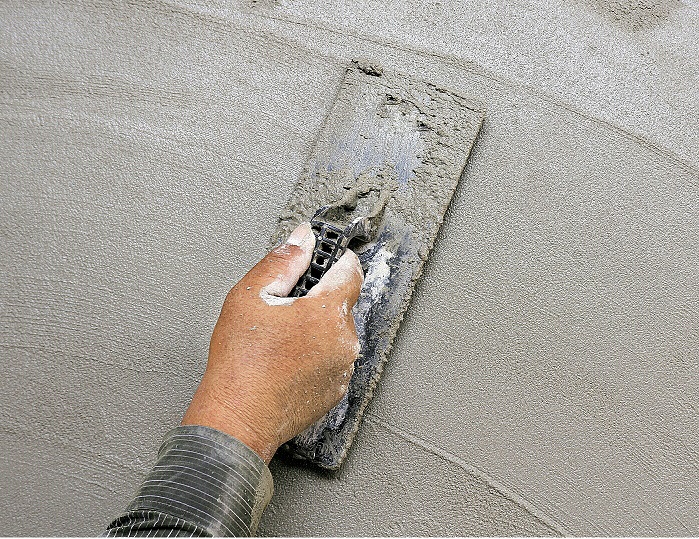Plastering Installation: Specialist Solutions for New Construction Projects
Plastering Installation: Specialist Solutions for New Construction Projects
Blog Article
Trick Tips and Devices for Effective Gluing in your house Enhancement Undertakings
Achieving a remarkable plaster finish in your house enhancement projects calls for a mix of the right devices and tried and tested techniques. Necessary executes such as the hawk and trowel are crucial for effective application, while proper surface prep work lays the foundation for success. In addition, understanding the subtleties of mixing plaster and applying it in slim layers can substantially influence the last end result. As we check out these basic facets, it ends up being obvious that avoiding usual risks can elevate your plastering abilities-- ensuring your next job not only meets but surpasses expectations.
Important Plastering Devices
A plasterer's toolkit is basic to attaining a smooth and sturdy finish on wall surfaces and ceilings. The important tools encompass a selection of executes made to assist in the gluing procedure efficiently and successfully. Key parts include a hawk, which is a flat, square device used to hold the plaster while applying it to surfaces. This device permits for easy transportation and application of the product.

In addition, a mixing bucket is needed for preparing plaster, making sure the appropriate uniformity before application (Plastering). With each other, these crucial plastering devices enable both experts and Do it yourself fanatics to attain top quality results in their gluing projects.
Surface Preparation Strategies
Effectively preparing the surface area prior to gluing is important for making certain bond and accomplishing a flawless surface. The primary step entails cleaning the surface to eliminate any type of dust, oil, or old paint that might prevent the plaster's capacity to bond properly. A detailed wash with a suitable cleaning solution is suggested, adhered to by washing and permitting the surface area to completely dry totally.
Following, evaluate the surface for any cracks or flaws. These must be full of a suitable filler substance and enabled to cure according to the maker's guidelines. For permeable surface areas, applying a guide is important to improve and develop an uniform appearance adhesion.
Additionally, it is vital to make certain that the surface is steady and structurally sound. Any type of loosened materials, such as flaking paint or damaged drywall, need to be fixed or eliminated. If working with stonework surface areas, consider using a scratch layer to improve grip.
Mixing Plaster Like a Pro

Making use of a tidy blending container, pour the water first, then gradually include the plaster powder while stirring constantly. This approach assists to stop clumping and makes certain an even distribution of materials.
When mixed, enable the plaster to relax for a couple of mins to enable the gypsum crystals to hydrate fully. This pause boosts workability and minimizes the danger of breaking during application. By following these actions, you can blend plaster like a pro, establishing the foundation for an effective gluing job in your home renovation undertakings.
Application Methods for Smooth Finishes
With the plaster mix prepared to the excellent consistency, the next step involves selecting appropriate application methods to achieve a smooth finish. This tool allows for a fine, also circulation of plaster across the surface while decreasing trowel marks.
Begin by applying a generous amount of plaster to the surface making use of the trowel, ensuring it adheres well. Once the first layer is applied, use a sweeping movement to smooth the surface area, applying also stress.
For the last touches, a wet sponge can be utilized to improve the surface better. Lightly haze the plaster with water advice and carefully scrub the surface area to attain a sleek effect. Constantly keep in mind to operate in small sections to maintain control over the application procedure, ensuring a smooth, specialist coating throughout your plastering project.
Usual Blunders to Prevent
When embarking on a smudging task, staying clear of common blunders is essential for achieving a flawless coating. Ensure that all dust, grease, and loosened materials are gotten rid of before using plaster.
Another typical mistake is using plaster too heavily. Thick layers can break as they dry out, jeopardizing the stability of the coating. Rather, decide for several thin layers, allowing each coat to dry totally before applying the following.
Furthermore, bad blending strategies can cause inconsistent texture and workability. Always adhere to the producer's instructions for mixing proportions and extensively mix the plaster to accomplish a consistent consistency.

Timing also plays an essential function; plaster should be applied while the substratum is damp to enhance attachment. High-grade trowels and drifts can make a significant difference in accomplishing a smooth finish.
Conclusion
Effective smudging needs a detailed understanding of essential tools and methods. By utilizing proper equipment, ensuring careful surface area prep work, and sticking to recommended blending ratios, optimum outcomes can be attained. Using suitable application techniques even more enhances the surface, while awareness of common errors can avoid obstacles. Proficiency of these components not only adds to the aesthetic appeal of a this article room but also makes sure toughness and longevity in plastering projects, making them integral to successful home renovation endeavors.
A float is one more essential tool, which helps in leveling the plaster and achieving an uniform surface area.

By following these steps, you can blend plaster like a pro, setting the foundation for a successful plastering task in your home renovation endeavors.
Lightly haze the plaster with water and carefully scrub the surface to accomplish a refined result.
Report this page